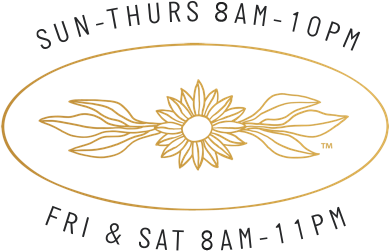Whether a simple brew or a tasty latte, a jolt of java is a welcome part of our daily routines. At The Glass Knife, we are curious about everything – including coffee – and we wanted to learn more about the origin and the journey behind the seemingly ubiquitous coffee bean. In the first of a three-part series highlighting the story behind our coffee at The Glass Knife, we shared the faces behind your coffee – the people that make it happen.
But how do they do it? Unlike many crops – say, a potato – that is picked, washed and ready for consumption, a coffee bean takes a surprisingly complex and time-consuming adventure. We trekked to Colombia with our exclusive roasting partners from Onyx Coffee Lab to understand this arduous process for ourselves:
Planting: A coffee bean is actually a seed. When dried, roasted and ground, it’s used to brew coffee. If it’s not processed, it can be planted to grow a coffee tree. It can take up to 4 years for a tree to bear fruit. Yes, patience is a virtue.
Harvesting: The fruit, called coffee cherry, turns bright red when ripe. At farms in Colombia, like those of Hermelinda Diaz and Hernando Cruz, picking is done by hand. It’s far from easy. Crews harvest each day during the season, from dawn till dusk, amongst dense trees and stony streams on steep hillsides. And the finesse of picking the cherry at the ‘perfect shade’ of red is – in and of itself – an art form. This is where a coffee that is clean, flavorful and interesting in each and every cup truly begins.
Processing: At La Palma y El Tucan, we watched pickers deliver their harvest late into the night. Straight out of the field, there are two additional steps to ensure quality and consistency. First, they pour the massive, beautiful buckets of coffee cherry into water. The cherries that float don’t make the cut. Then, the cherries go to a pulping machine to extract the beans from the berries. The resulting bean – with a skin still on, called ‘parchment’ – is sifted once again for quality. This is called a “wet method”. (Oh, and the leftover berry and juice? At this sustainability-focused farm, that’s all composted and given back to local farmers as fertilizer for their trees).
After the pulp is removed, only the best beans are transported to large, water-filled fermentation tanks. Considering factors such on the condition of the beans, the climate and the altitude — they will ‘rest’ in these tanks for another 12 to 48 hours.
Drying: At this stage, the beans contain about 50% moisture. For roasting, beans should contain about 12% moisture, so several steps are taken to remove the excess moisture. The beans are transferred to outdoor drying racks where they spend 2-3 weeks and will get to around 25% moisture content as the sun evaporates the water. Next the beans are transferred to a gas-fired coffee drier (almost resembling a large clothes drier), which dries them to the optimal, 12% moisture.
Drying sounds fairly simple, right? It’s actually a crucial stage in good coffee. Too long outside, a fungus could set in on the beans. Too long (or too hot) in the mechanical dryer and the cell structure of the bean could break down. See what we mean by complex?
What’s Next: From here, these ‘green’ beans are ready to be sorted – yet again. The coffee from La Palma y El Tucan is classified as Grade 1: No primary defects allowed – period. What does that mean? Literally, the perfect bean. It is then hulled (the process of breaking off the thin outer parchment husk) and then shipped for roasting.
The average time from farm to roaster: 5 months; How’s that for a journey?
No matter what coffee beverage is created at The Glass Knife, it all starts with the green coffee. Nothing can take the place of the amount of time, effort and passion at the farm level. From the very beginning, we wanted to challenge the status quo in each of our offerings and our coffee is no exception. In partnership with Onyx Coffee Lab, – ranked as one of the top 21 best coffee roasters – our goal is to bring you the very best possible in each and every bean.







